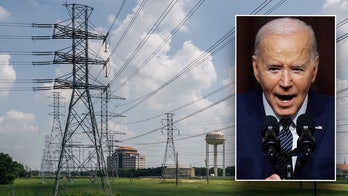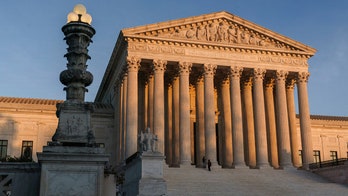
“I still have student loans,” David Guard, a graduate of Gettysburg College and American University, told Fox News recently, as lawmakers and the White House bickered over the debt ceiling. “I could see an increase in those interest rates.”
Such fears are commonplace and spreading, as educators, economists, parents, and students watch with growing dismay what some are calling America’s next bubble: the skyrocketing volume of student loan debt.
Figures provided by the Federal Reserve Bank of New York show that since 1999, outstanding student loan debt has grown by more than 511 percent. Over that same period, all other household debt in America – the sum total of all credit card bills, all auto loans, even all mortgage debt assumed during the great housing boom and bust that triggered the financial crisis – grew by about 100 percent.
Rising by $100 billion a year, outstanding student loan debt now stands at about $930 billion, and is expected to reach $1 trillion by year’s end.
“Student loan debt has become a macroeconomic factor; it affects the economy,” said Mark Kantrowitz, publisher of the financial aid website www.finaid.org. “Students who graduate with excessive debt are more likely to delay buying a car, buying a house, getting married, having children, saving for their retirement….They're spending less because they first have to tackle their student loan debt.”
Tackling that debt, at a projected monthly rate of .5 to 1.0 percent of the overall amount due, means that an estimated $5 to $10 billion is being sucked out of the economy each month.
What’s more, the country’s dismal job market leads to rising rates of delinquency and default. Unemployed, and under-employed, college graduates have a tougher time making payments on their student loans; as a consequence, the rate at which such payments are falling more than 90 days past due is on the rise.
“Certainly, students have their role,” Michelle Asha Cooper, president of the Institute for Higher Education Policy, told Fox News. “They’re individual consumers. We need them to make wise and appropriate choices about where they go to school, and their repayment options.”
Experts cited a confluence of factors creating the student loan bubble: larger numbers of college enrollees; rising tuition rates; diminishing pools of grant aid; and sometimes extravagant, and unnecessary, spending by institutions of higher learning, who pass their costs on to student borrowers.
Colleges and universities, said Cooper, “have a responsibility to make sure that they are doing everything possible to restrain college costs.”
But while he agrees the explosion in student debt is cause for alarm, Kantrowitz – who earned bachelor degrees in mathematics and philosophy from MIT and a master’s degree in computer science from Carnegie Mellon University – rejects the application of the term “bubble” to the problem. That, he said, would require an “oversupply of liquidity” relative to the value and cost of an education that is not discernible at present.
Beyond dispute is the value of a higher education diploma, notwithstanding the risks associated with borrowing heavily to obtain it. Federal data last month showed an unemployment rate of under 5 percent for those with at least a college degree, compared with a rate of over 9 percent for those who only have a high school education.




